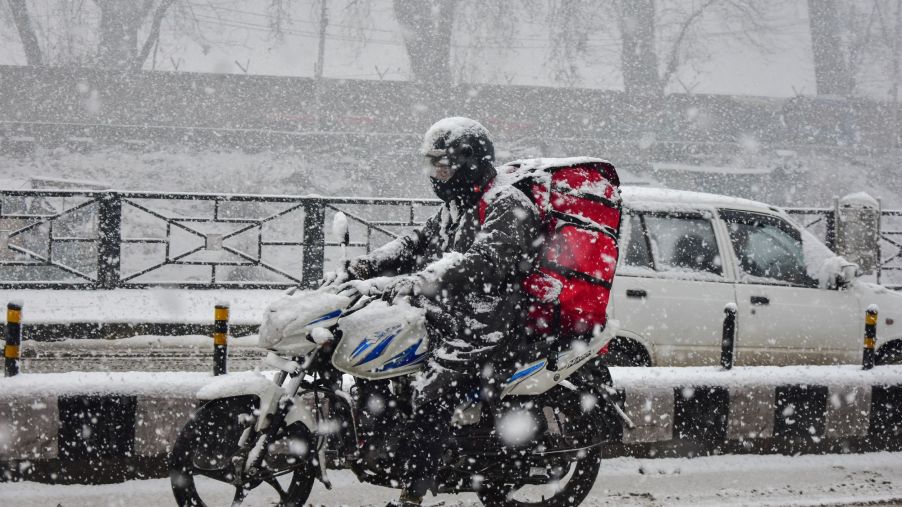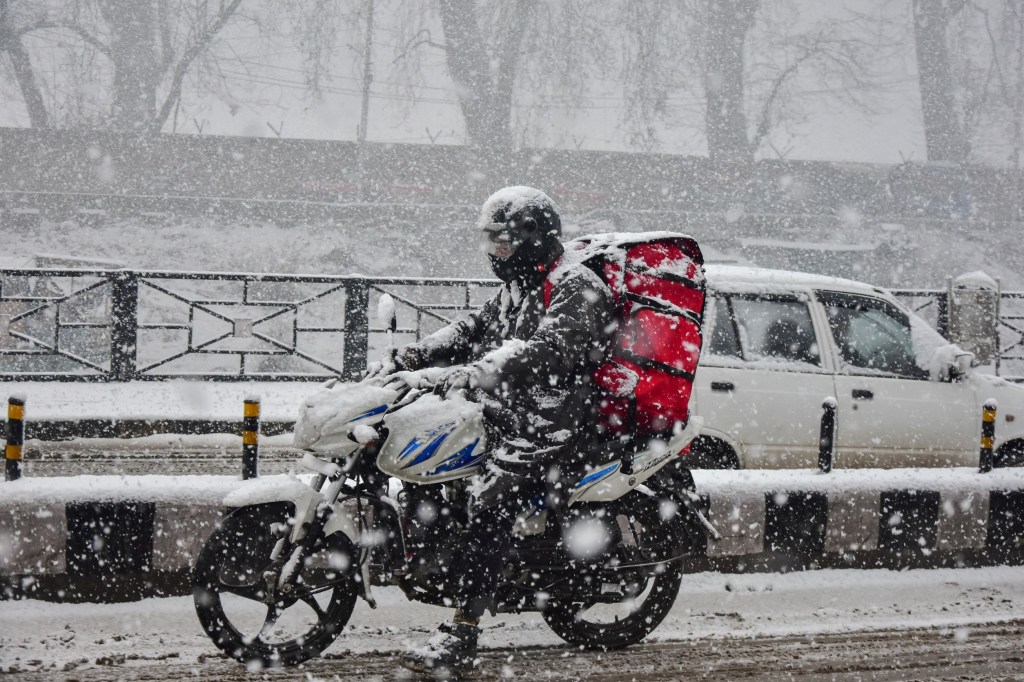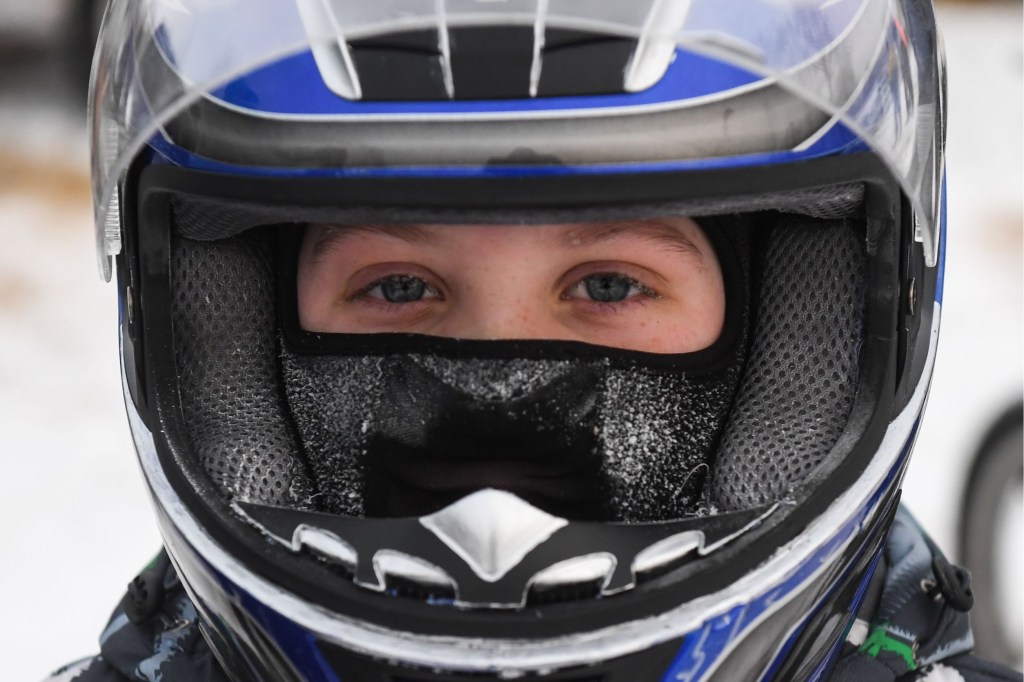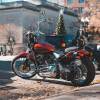
Stay Toasty-Warm With Cold-Weather Motorcycle Gear Like This
In many parts of the US, a chill in the air means it’s time to get your motorcycle ready for storage. Elsewhere, though, including overseas, winter is just another riding season. However, as cold weather moves in, your regular motorcycle gear might not be enough to protect you. Even the best armor won’t necessarily keep you safe from hypothermia. But you can keep the winter chill at bay with the right motorcycle gear strategy.
Keeping warm during winter rides is built on (base) layers

Just like a skyscraper, staying warm on winter rides requires a solid foundation. For skyscrapers, that means concrete; for cold-weather motorcycle gear shoppers, that means investing in quality base layers. And it also means learning effective layering strategies.
Keep in mind, it doesn’t have to officially be winter for you to break out the base layers. Riding a motorcycle accelerates convective heat transfer, which means you lose body heat quicker. That’s a good thing on a hot summer day. But it also means that, at 45 mph, 50° F feels more like 40° F. Spend more than a few moments riding with that kind of wind chill, and your body will start shutting off blood flow to your extremities. At first, that just means numbness and tingling in your fingers, ears, and toes. But that quickly turns to pain and even frostbite. And even before that, you’ll suffer from a loss of dexterity, making it more difficult to control your bike.
However, although base layers are a vital part of your cold-weather motorcycle gear closet, that doesn’t necessarily mean ‘more is better.’ Putting on too many layers at once can make you sweat. And once you’re riding, the wind chills that sweat, drawing even more heat away from your core. Plus, excessive layering can restrict your neck, making it more difficult to see what’s around you, Outside notes.
Cold-weather motorcycle gear also needs to keep you dry and shield you from the wind
This is where proper base layering comes into play for your winter motorcycle gear strategy. What you need to stay warm are layers that both retain heat and wick sweat away from your skin. These layers also need to keep the wind and outside moisture—whether ice, rain, or snow—from hitting your skin, too. The usual arrangement, from closest to farthest from the skin, looks something like this:
- Base layer: sweat-wicking, preferably close-fitting, wool or synthetic
- Mid layer(s): insulated, heat-retaining vest/sweater/liner
- Outer layer: waterproof and windproof jacket/pants/suit
That last layer refers to ‘regular’ motorcycle gear, including boots, jackets, and gloves. However, winter motorcycle gear is built differently than ‘three-season’ gear, RevZilla notes. Cold-weather motorcycle gloves, for example, have thermal liners and often waterproof ones, too. But you can also purchase separate insulated liners for your gloves. And even if you wear waterproof boots, make sure you also wear some thick woolen and/or synthetic socks.
Speaking of waterproofing, not every jacket and pair of pants is waterproof or heavily insulated. So, if wet winter weather is a regular concern, considering investing in some insulated rain gear. Or, at the very least wear a rain suit over your other cold-weather motorcycle gear, RevZilla says.

But it’s not just snow and slush that your winter motorcycle gear has to deal with: there’s the wind, too. A solid layering strategy usually keeps your core warm, but the wind hits your extremities harder. That includes your head, even through a full-face helmet, Motorcyclist warns. So, besides glove liners and warm socks, your cold-weather motorcycle gear checklist should include a balaclava or similar headwrap. Pair your winter gloves with wind-blocking handguards or insulated hand covers, too, RideApart says. And don’t underestimate the protection of a good windscreen.
When winter really hits, break out the heated motorcycle gear
Insulating layers do help you retain body heat, but they can’t replace what’s lost. Heated cold-weather motorcycle gear, though, neatly solves that problem.
Although you can’t get a heated helmet—yet—heated winter motorcycle gear includes liners for gloves, jackets, and pants. Plus, heated vests, heated jackets, and even heated socks. And of course, there are heated handgrips, too. Some motorcycles come standard with heated grips, while others offer them as optional accessories. And manufacturers often sell branded heated gear that’s compatible with their latest motorcycles.
You can still wear heated cold-weather gear on older and classic motorcycles, RevZilla says, but there are some caveats. Firstly, if your bike’s ignition system doesn’t use a battery, you can’t run heated gear. Secondly, you’ll have to wire your heated gear directly to your motorcycle’s wiring harness. And thirdly, heated winter gear only works if your motorcycle’s charging system makes ‘excess’ electrical power. So, if you’re not careful, running that gear could drain your battery.
So, there you have it: the motorcycle gear you need to make sure the winter cold never bothers you.
Follow more updates from MotorBiscuit on our Facebook page.


